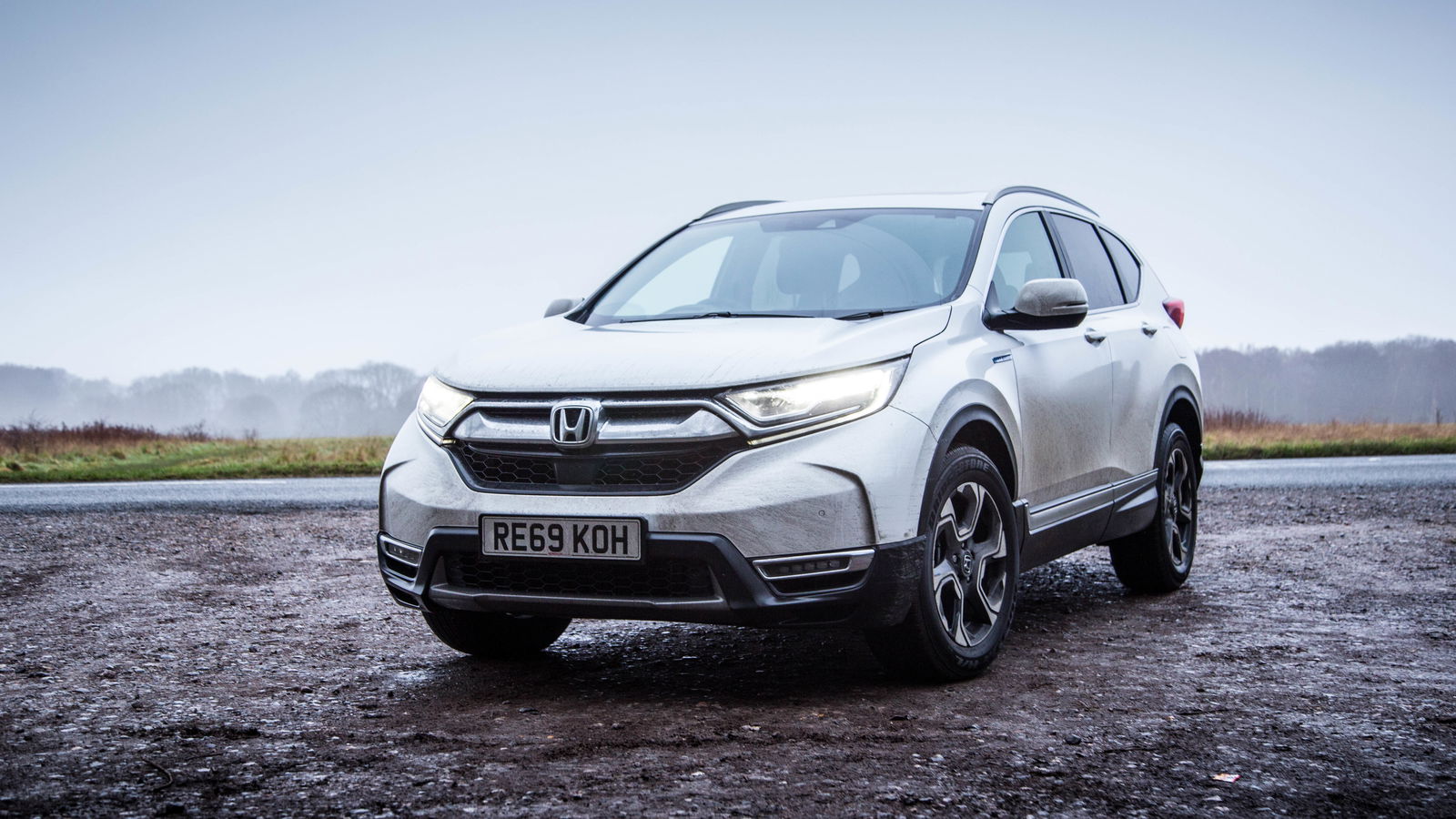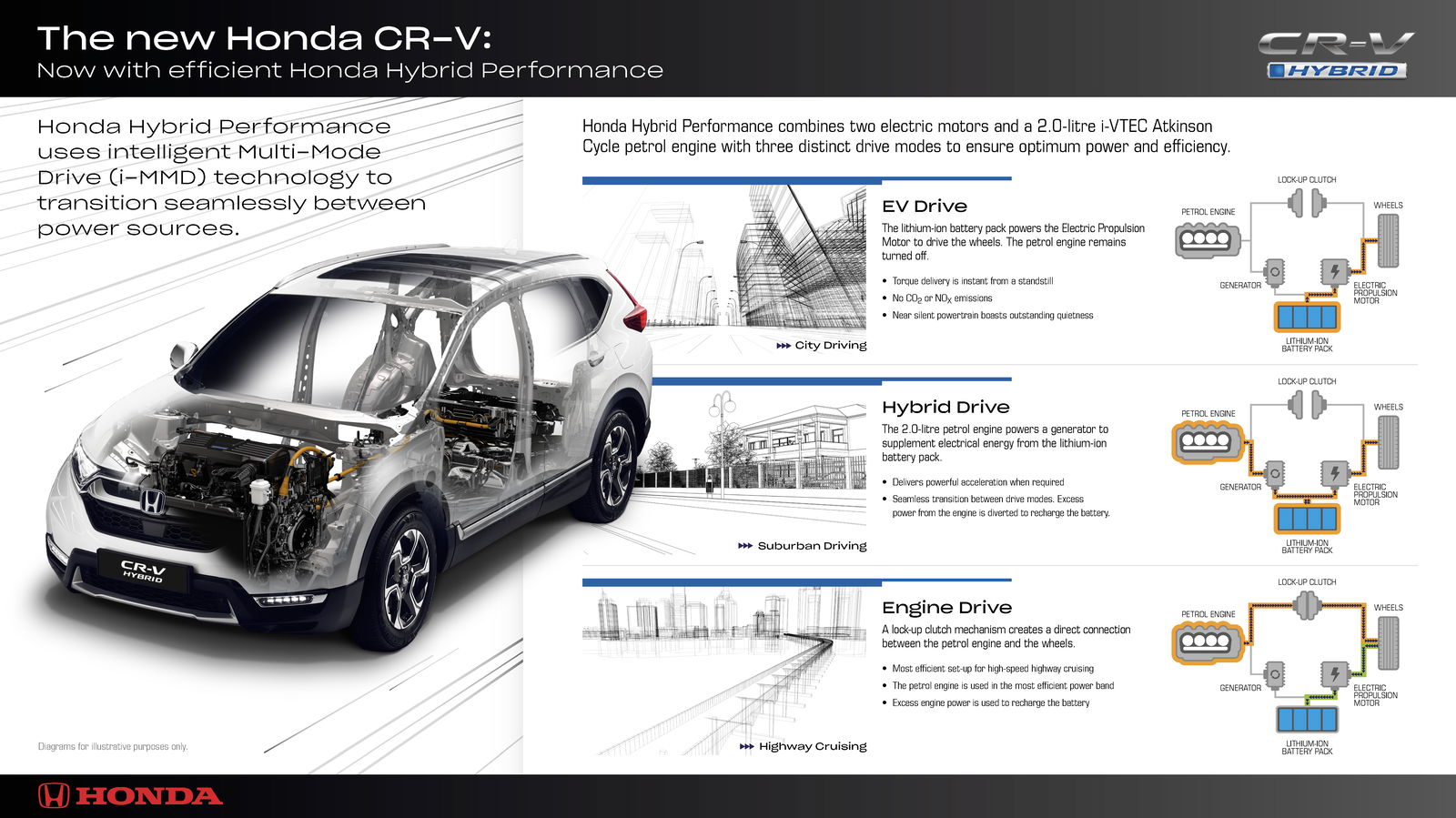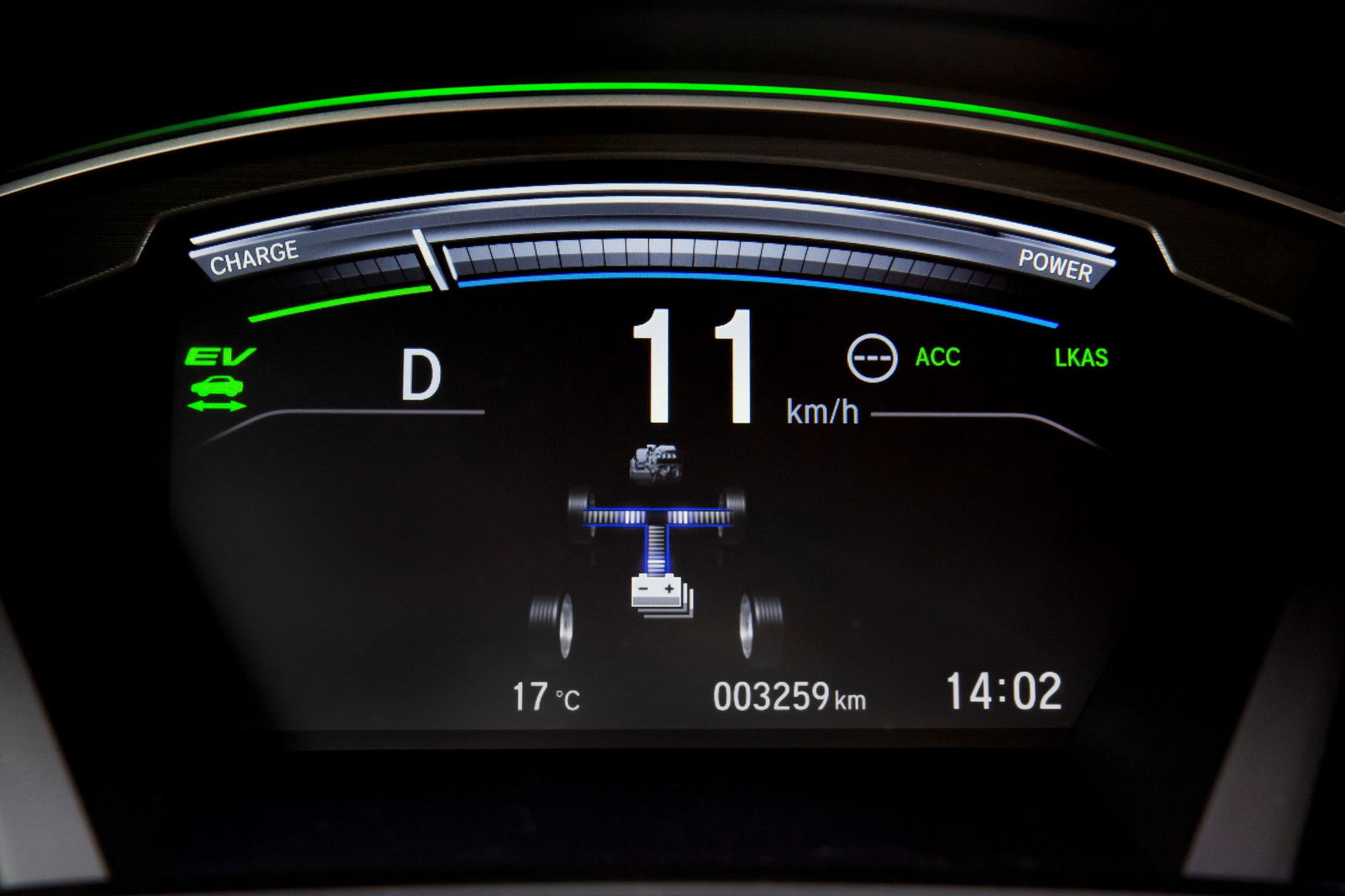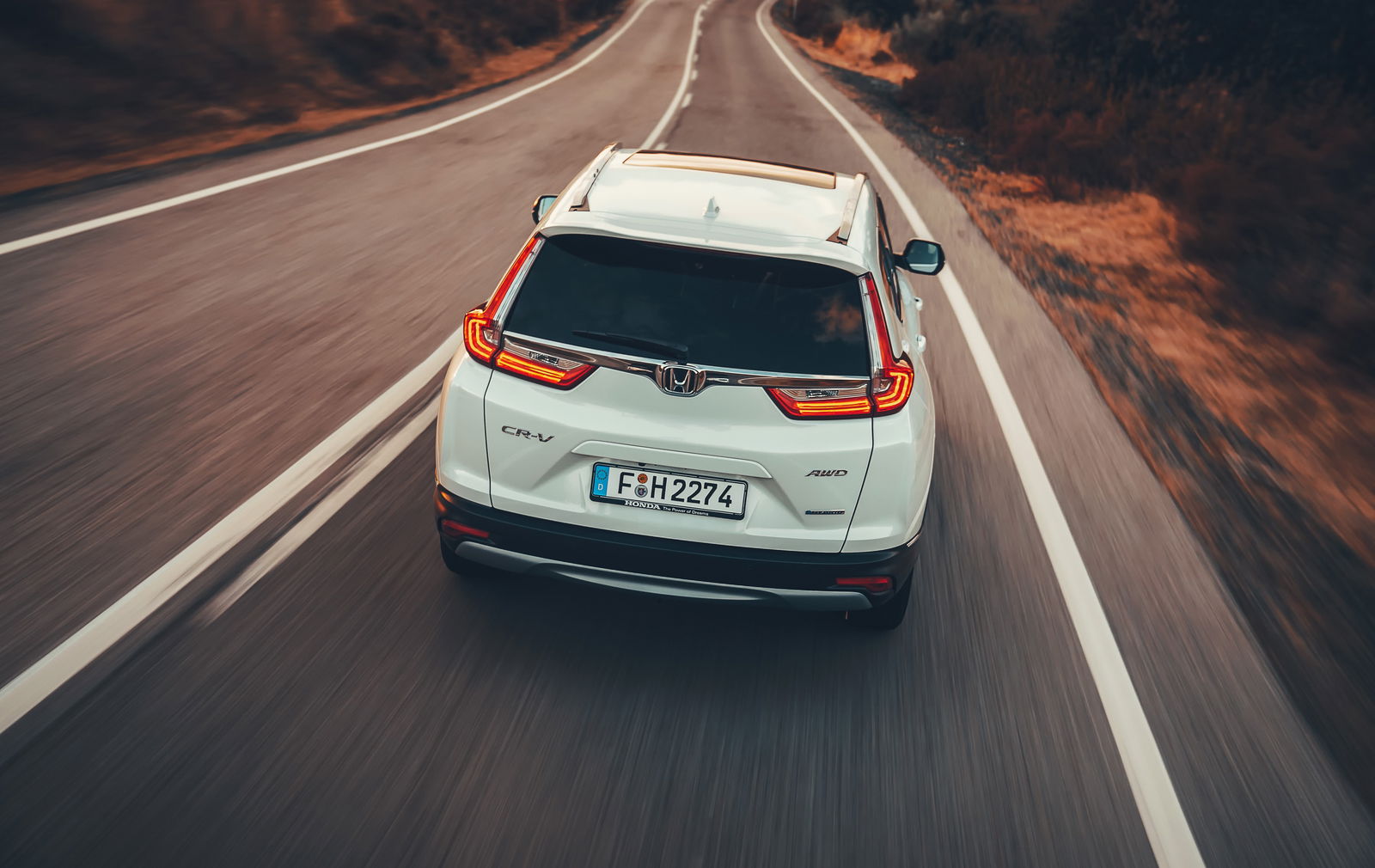Honda's No-Gearbox Hybrid System Is So Complex It'll Make Your Head Hurt

If I turned the conversation to cars with no gearboxes, it’s highly likely the Koenigsegg Regera would spring to mind first. However, snazzy though the Swedish hypercar company’s Direct Drive system is, you can experience a gearbox-less powertrain in something a whole lot cheaper: a Honda CR-V.
The hybrid versions of the CR-V, Accord, Insight and Clarity all use this hybrid system, which is so complex, understanding it is damn-near headache-inducing. After unexpectedly ending up behind the wheel of a CR-V Hybrid for a week (a long and not especially interesting story, so I’ll spare you that), I sought to find out exactly what the deal is under the car’s skin.

The catchily-titled Intelligent Multi-Mode Drive (i-MMD) hybrid system is made up of several key bits. There’s a transversely-mounted 143bhp 2.0-litre inline-four engine running on the more efficient Atkinson cycle, which is joined by a motor-generator, a 181bhp motor for the front axle and a small lithium-ion battery pack.
When you set off, the motor on its own powers the front wheels. Since it’s only a little 1kWh battery, the pack drains quickly (pure electric range is only just over a mile), so the engine soon has to be drawn into the equation. However, unlike a conventional hybrid powertrain, the internal combustion component doesn’t directly power the wheels at this point. Instead, it powers the generator, which in turn powers the motor which drives the front axle, while charging up the battery with any excess power.

At cruising speeds, the petrol engine stops powering the generator, driving the front axle via a locked-up clutch and a single gear. In this ‘Engine Drive’ mode, any excess power from the inline-four charges the battery, as it does in ‘Hybrid Drive’. Energy is also recouped by the drive motor under braking.
When you put your foot down, the revs don’t rise and fall in tandem with the vehicle’s speed. Instead, you’ll see the engine speed rise quickly under full throttle as it works hard to power the generator, buzzing away at the top end until you ease off the accelerator. At this point (if you’re going fast enough) the clutch locks up and the front axle is directly driven. It’s an odd sensation, feeling neither like a CVT transmission nor a conventional automatic.

Building a car with three distinct ways of propelling itself forward might sound unnecessarily complex, but there are benefits to this setup. As mentioned above, there’s the ability to recuperate any excess energy from the internal combustion engine, but also, the regenerative braking capabilities are much more impressive than on the average hybrid, since the drive motor is so big.
It’s worth noting this isn’t some mad idea only Honda is running with - the Mitsubishi Outlander PHEV runs a similar system, albeit with a considerably larger battery which can be plugged in and charged (hence the car’s name), and a third motor unit for the rear axle.

So does it work in the real world? It certainly seems to. Moments of quiet, relaxing electric-only operation occur frequently during urban driving, and the shifts between the three distinct drive modes occur seamlessly. At full throttle, it’s just about quick enough for most, and during mixed driving, it’s easy to get the MPG into the mid-40s. With a greater proportion of lower speed journeys and time to learn the most efficient way to drive the HR-V Hybrid, it should be capable of a lot more.
That’s probably all the average CR-V owner cares about. We can’t imagine many will give much thought to the enormously complex processes going on behind the scenes to keep them moving, which seems like a bit of a shame.


Comments
Wow that’s weird
Mechanics almost need a degree in electro-mechanical engineering these days lol
[DELETED]
If I get it right, this propulsion system is similar to the one of the Fisker Karma?
“We can’t imagine many will give much thought to the enourmously complex processes going on behind the scenes to keep them moving, which seems like a bit of a shame”
That’s the painful truth behind an engineers work. No matter how impressive your work may be, the people you build it for won’t ever be interested in the thing you did to make their work the way it does.
It’s not that complicated. Just take a manual gearbox, replace every gear ratio except the top gear with an electric motor and a generator. That’s how Honda’s hybrid system works.
So basically a Chevy Volt but 9 years later….and with 1 mile of EV range instead of 52. No thanks, a 2012 Volt for 6 grand is a better value than this…
So a more complicated version of the toyota, Ford hybrid system.
Engine stays off and is power by the 88kw motor, at certain battery level or power needed, engine kicks on and used the energy from the engine to power the motor to mantain speed.
If enough energy is required the engine gets connected to the shaft that the motor is connected.
The motor and engine run together. There is a 2nd generator as well that rotates with the engine a smaller one.
Generator is also the motor BTW so why Honda has one called an eltric motor and one called a generator makes no sense.
You get 2 generators one though doesn’t run as a motor and the bigger one does.
This is not new or is the stepping, the modes, Ford and Toyota hybrids do this already and have for over 7 years if not longer.
When breaking the generator runs to slow the car down. A generator is also an eletric motor.
This isn’t that odd. Things like diesel electric trains and submarines operate basically the same way
Quote :Mitsubishi Outlander PHEV runs a similar system, albeit with a considerably larger battery which can be plugged in and charged (hence the car’s name), and a third motor unit for the rear axle.
-
Basically it doesn’t plug in and less battery
So basically its not even close to the Mitsubishi PHEV
Pagination